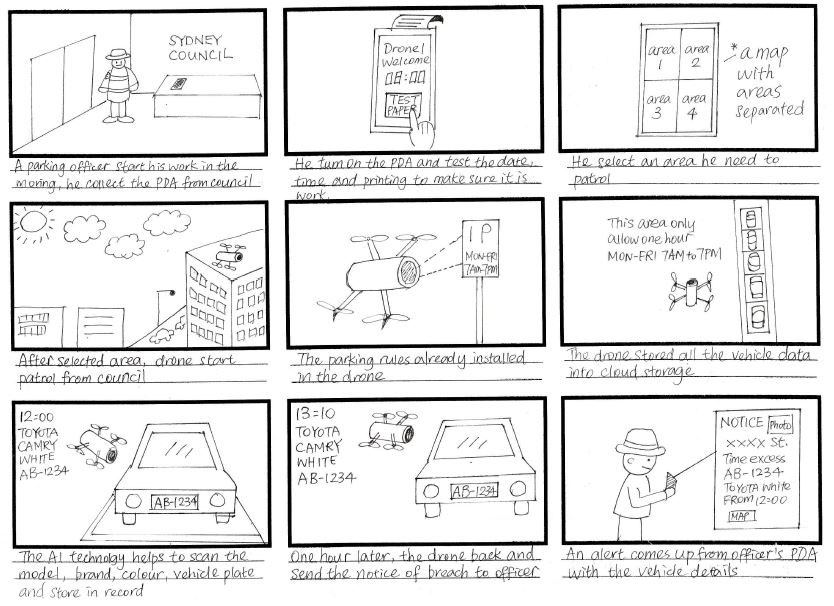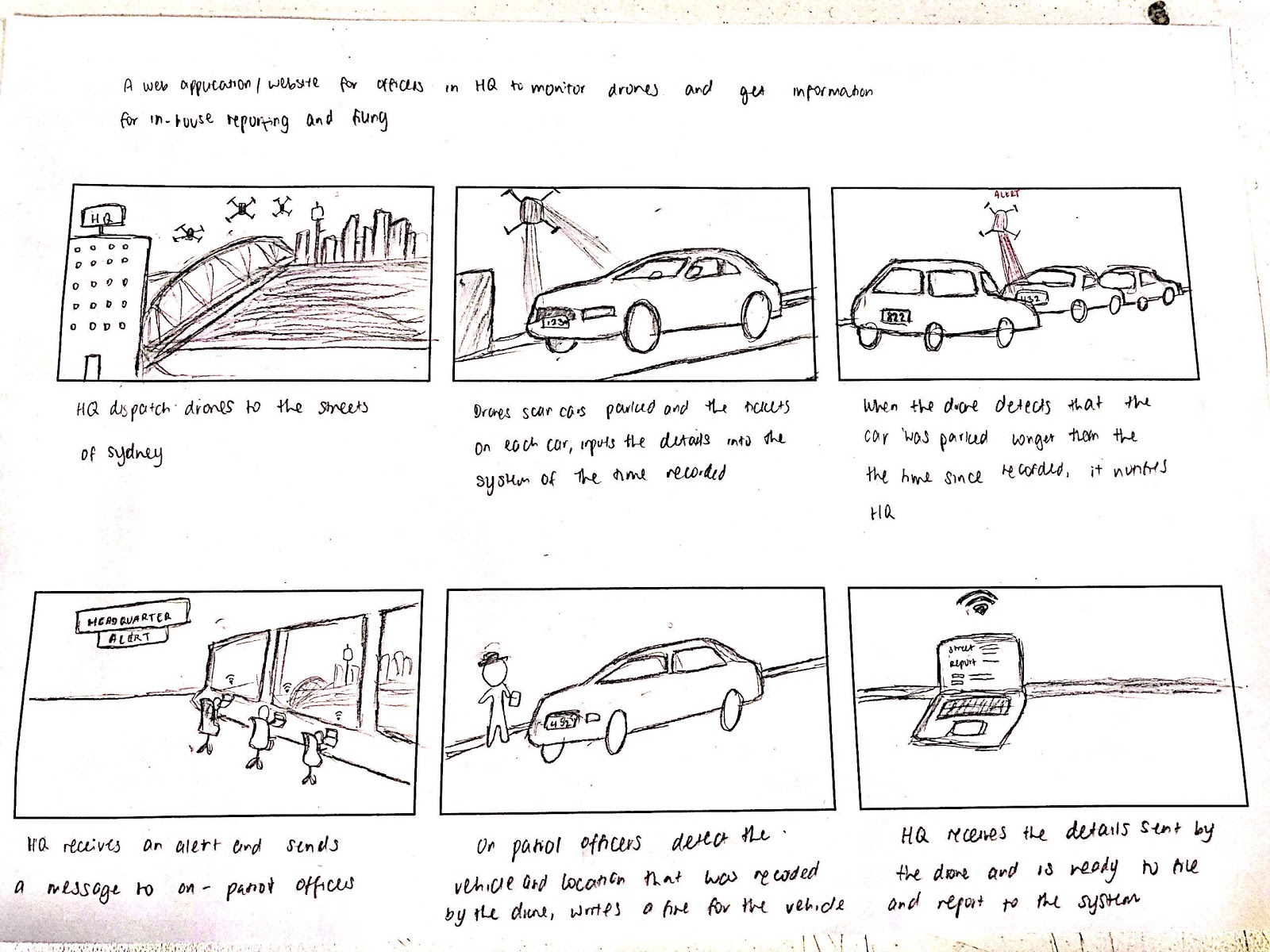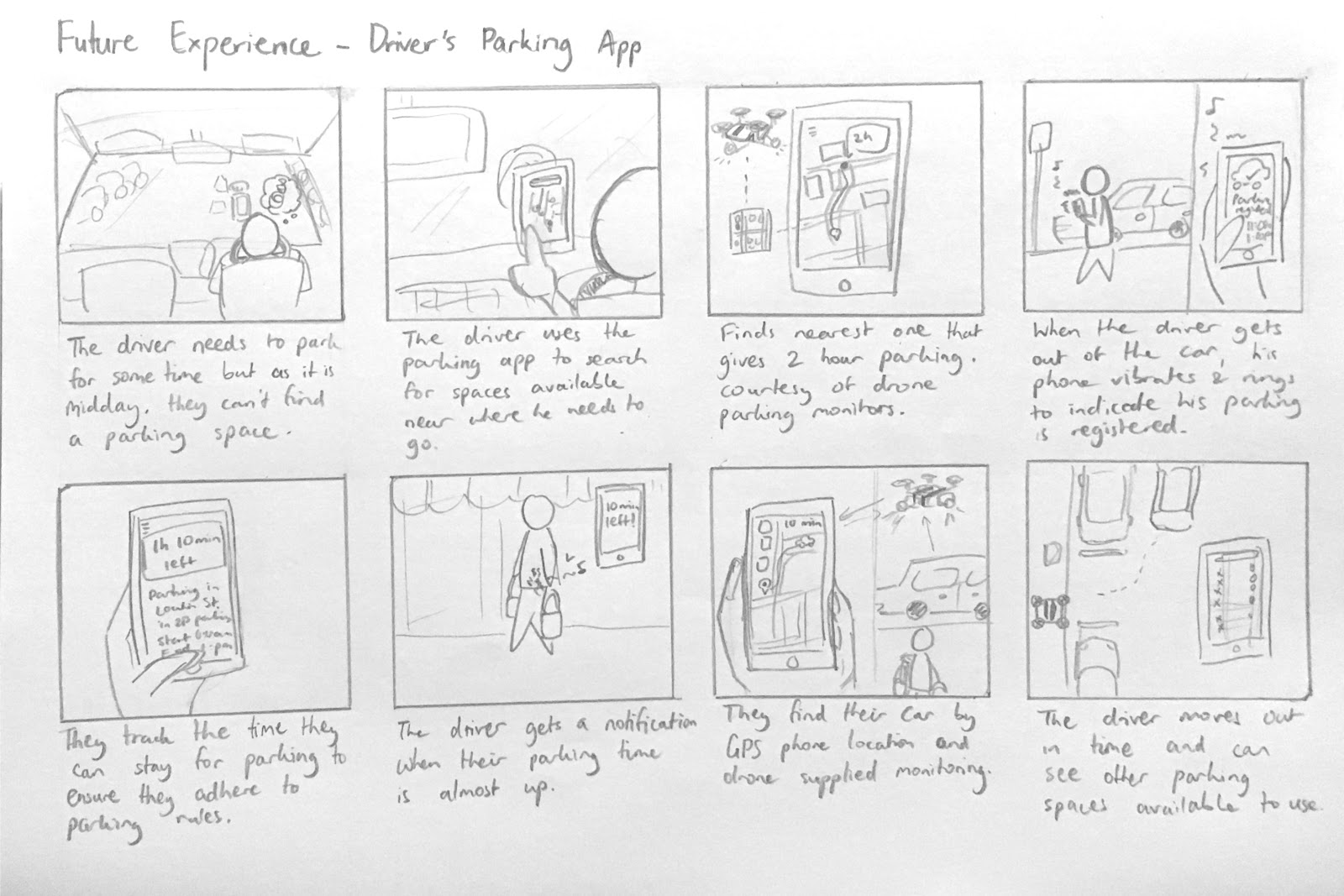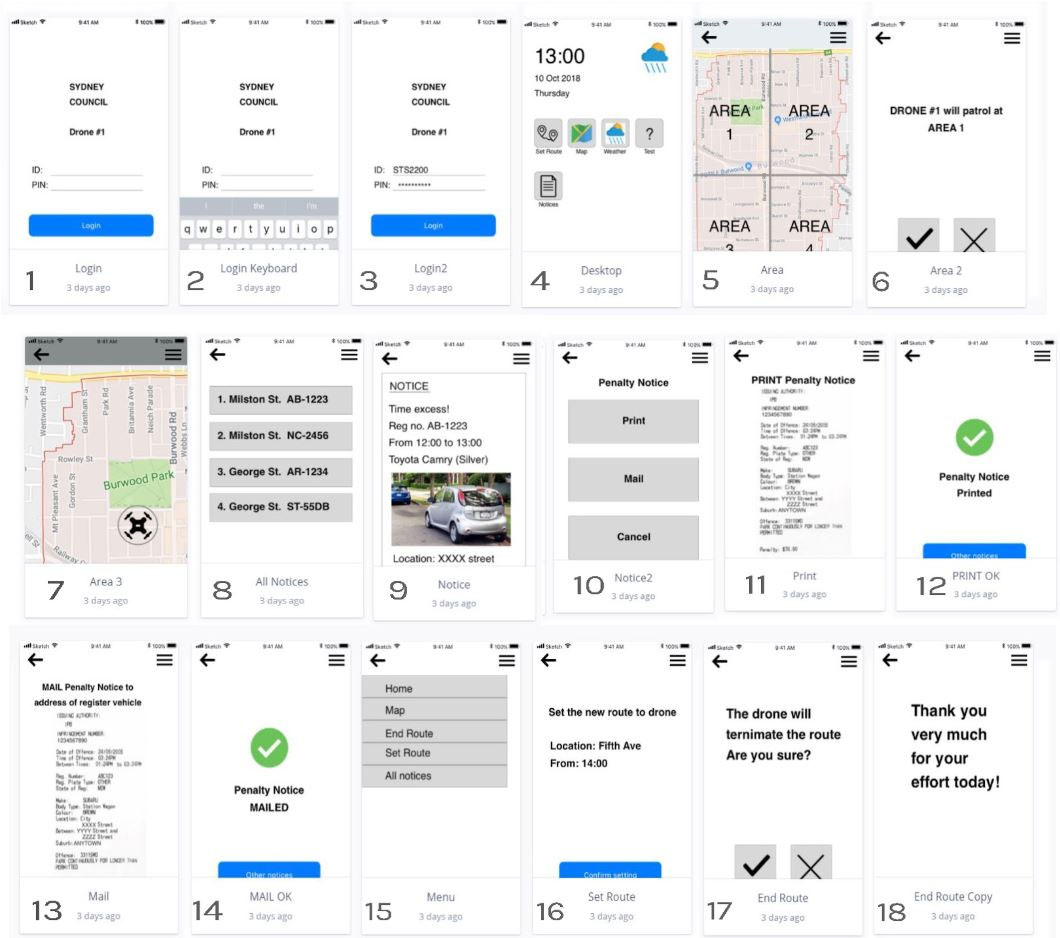USER INTERFACE DESIGN
Title: Drones on Patrol
Team: Angie Kuo/ Jacqueline Tenges/ Gaby Hartono/ Jihyun Park
Goal: Design how an autonomous vehicle could help solve the problems that parking rangers face in their jobs. Designing visual interface that allow user interact with autonomous vehicles in future cities.
Interactive prototyping: Visit Invision link
Team: Angie Kuo/ Jacqueline Tenges/ Gaby Hartono/ Jihyun Park
Goal: Design how an autonomous vehicle could help solve the problems that parking rangers face in their jobs. Designing visual interface that allow user interact with autonomous vehicles in future cities.
Interactive prototyping: Visit Invision link
Background research
From the beginning, we conducted background research to understand what duties are carried out by the ranger team and what the existing tools they are using to perform these duties. The data collected from this research helped us to prepare some interview questions which we later conducted with ranger officers to better understand their job. Upon reflection, this background research was very important because we were well prepared it showed that we were professional and inevitably the partipants were more willing to help us and provide information specific to our task.
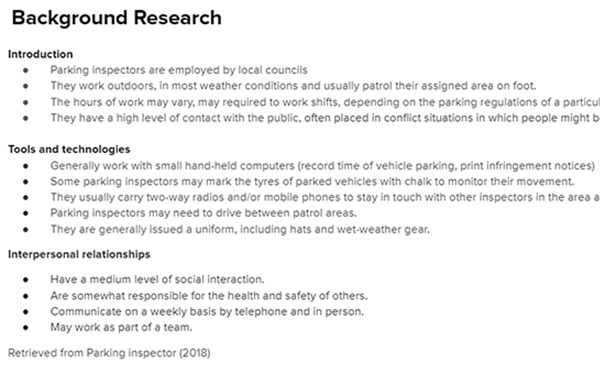
Interviews / Observations
After completing the background research, the next step was to email rangers outlining our project and invite them to attend interview in order for us to better understand the work process and experience of rangers when enforcing parking regulations. The participants that volunteered included; managers and other staff members from the parking regulation department at Burwood Council and Strathfield Council. In addition, we also observed the behaviors of the parking rangers who patrolled in Townhall and performed a quick interview with them.
From this, we found out some issues of parking regulations included:
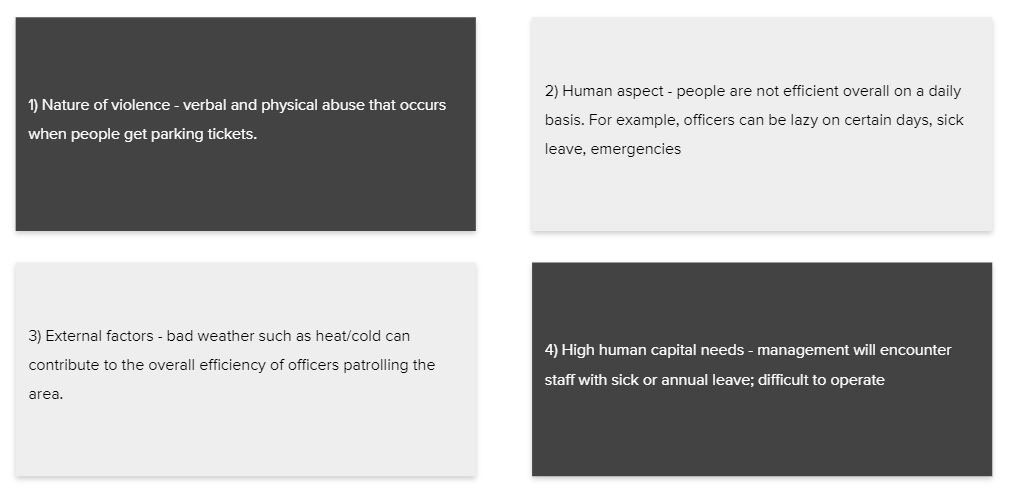
Upon completing all interviews, we got a deeper insight of the role and resonsibilities of a parking officer. Some of these responsibilities included: the process of a parking officer, the difficulties and issues parking officers have to manage from the public, what is the existing tools they are using and what kind of new technologies could be implemented to better improve the tool.
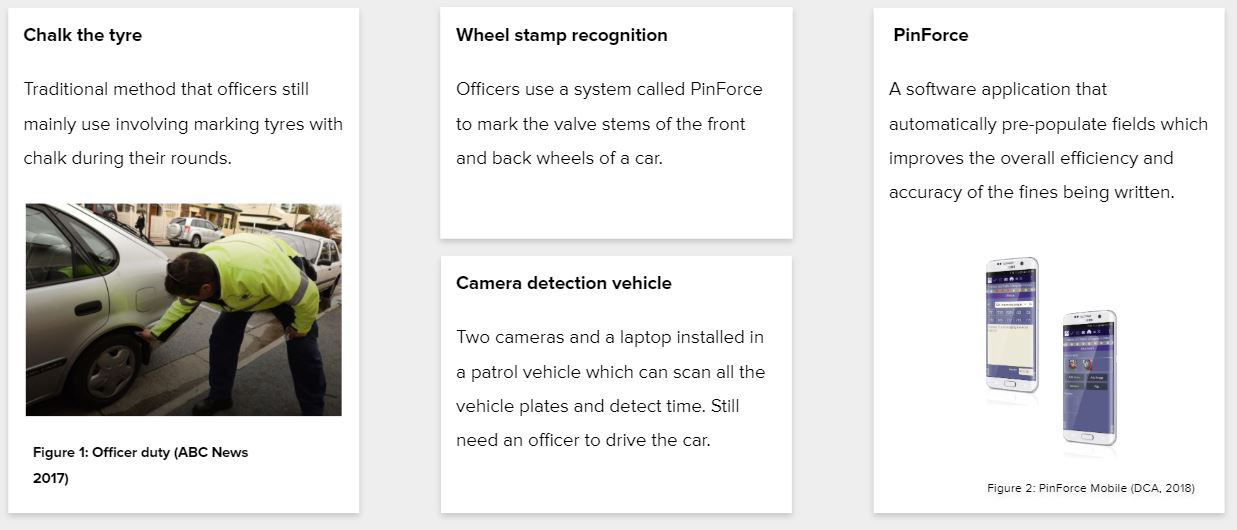

From this, we found out some issues of parking regulations included:

Concept ideation
After we learnt about some of the issues that occur in the manager and ranger's duties. We discussed and sketched our ideas on paper. Each group member has a different mind and a different approach, as such we brainstormed three different ideas. Some concepts are hard to explain or understand. Then we hand drew a simple interface to convey our initial ideas.

Storyboards
We finally generated three main concepts to innovate the parking officer working process by using an autonomous vehicle and made their relative storyboards. We found that by using a storyboard it conveyed more clearly the interactions between people and products. These concepts are highlighted below.
Paper prototype
We drew the low fidelity prototyping in order to generate the initial interface from the ideas. Marvel is a useful tool for low-fidelity prototyping as we can upload the paper prototype immediately and allow a pilot testing to gain feedback for mockup quickly.


Mockup
We iterated our concept by using the feedback from pilot testing. We made a mockup of the wireframe by using the software Sketch and made it interactive by Invision to prepare it for the coming evaluation events. We had skipped the wireframe from paper prototype to mockups. Upon reflection in this part, we better can first quickly make a wireframe to confirm its usability with the users but not wasting time on aesthetic things.
First evaluation
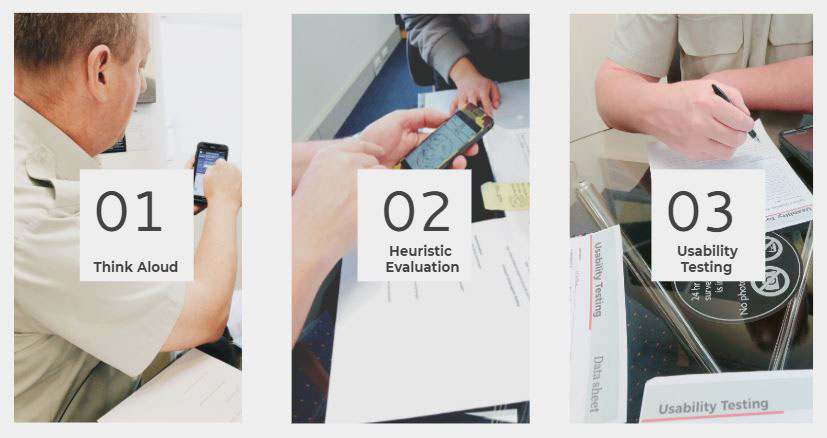
We met again with the staffs at Strathfield Council to complete an evaluation for both our concepts. They performed the user testing by using the think-aloud method, here we gave them a task to perform (print an infringement notice). They described the steps and expressed their thoughts and feelings, whilst we simultaneously observed and recorded their behavior and pain points. Then we conducted interviews with them.
From the interviews, it was clear that they were more interested in the patrol parking officer app because the interface was familiar to current tools and the processes were easily understood by the parking officers. In saying that, they also stated that the management app is quite a useful tool because a manager can oversee the whole area by using a desktop.
From the interviews, it was clear that they were more interested in the patrol parking officer app because the interface was familiar to current tools and the processes were easily understood by the parking officers. In saying that, they also stated that the management app is quite a useful tool because a manager can oversee the whole area by using a desktop.
Development of concept
Based on the feedback from the evaluation, we chose to iterate on concept one - the mobile drone patrol app for parking officers as our final concept. Our final mobile drone patrol app incorporates previous feedback and aspects of concept two to provide a more flexible and efficient use of drones to aid in parking enforcement.
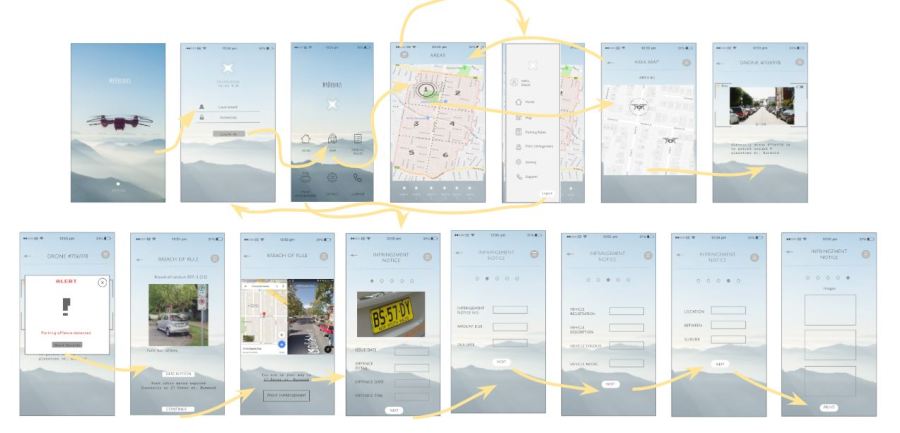

The main functions of the App
- Login page to enter username and password for security purpose
- Index page icons (Map, Parking rules, Print notice, Setting, Support)
- The separate areas on the map allow users to choose the patrol area directly and more easily
- A drop down menu which shows the username and select function
- The map shows where the location of drones are, when a user clicks on the drone, it will show the details and screen recording from the drone
- An alert will pop up when a parking violation has been detected
- Step by step to guide the user to issue an infringement notice more easily
Second evaluation
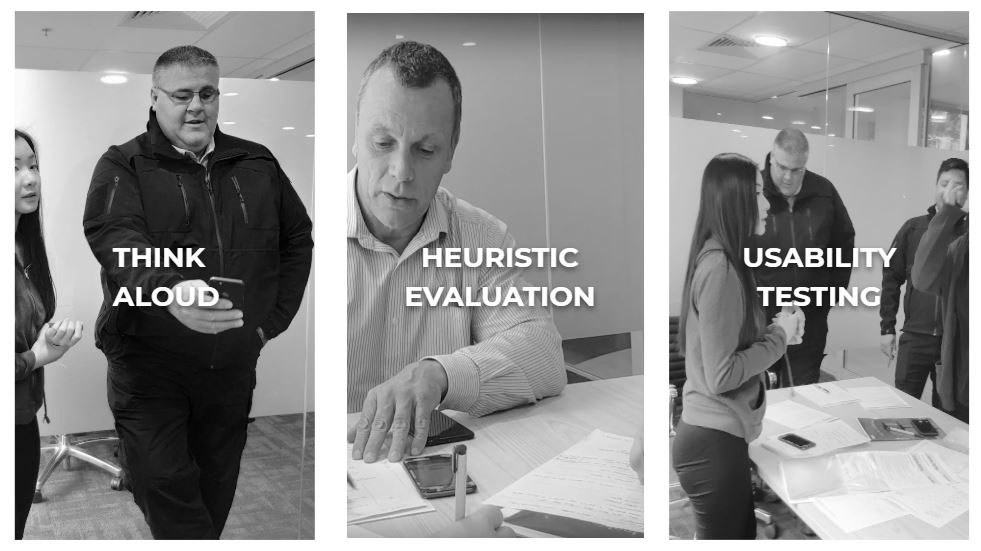
We conducted a second evaluation to test our development concept with the staff at Burwood Council. This time we only tested concept one.
Findings:
Findings:
- Many users expressed how easy it was to use the app
- Majority of officers stated that although the app looks good overall, they wouldn’t be able to understand the full scope of our app unless they used it in real life
- Some are still quite skeptical about the idea, whilst others were advocating for the change to happen
- Users don't know the battery life of the drones
- A manager suggested having a managing platform
- The details of the infringement notice were not enough
Critical evaluation
After we added a managing mode which can check the battery level of all the drones and all the breach records. We then performed a final evaluation with the senior ranger at Strathfield Council. This evaluation was also conducted outdoors in order to test the app suitable to use in a sunlight environment. From this trial, we found the following areas for improvement:
- The icons were too small and did not fit the rangers finger properly
- The fonts were too small, the ranger provided feedback that he always needed to zoom in when he wanted to read something
- Manager view and officer view were confusing
High fidelity prototyping
We worked collaboratively on the high fidelity prototyping taking into consideration the previous findings and recommendations from the parking officers, we then decided to make the following changes:
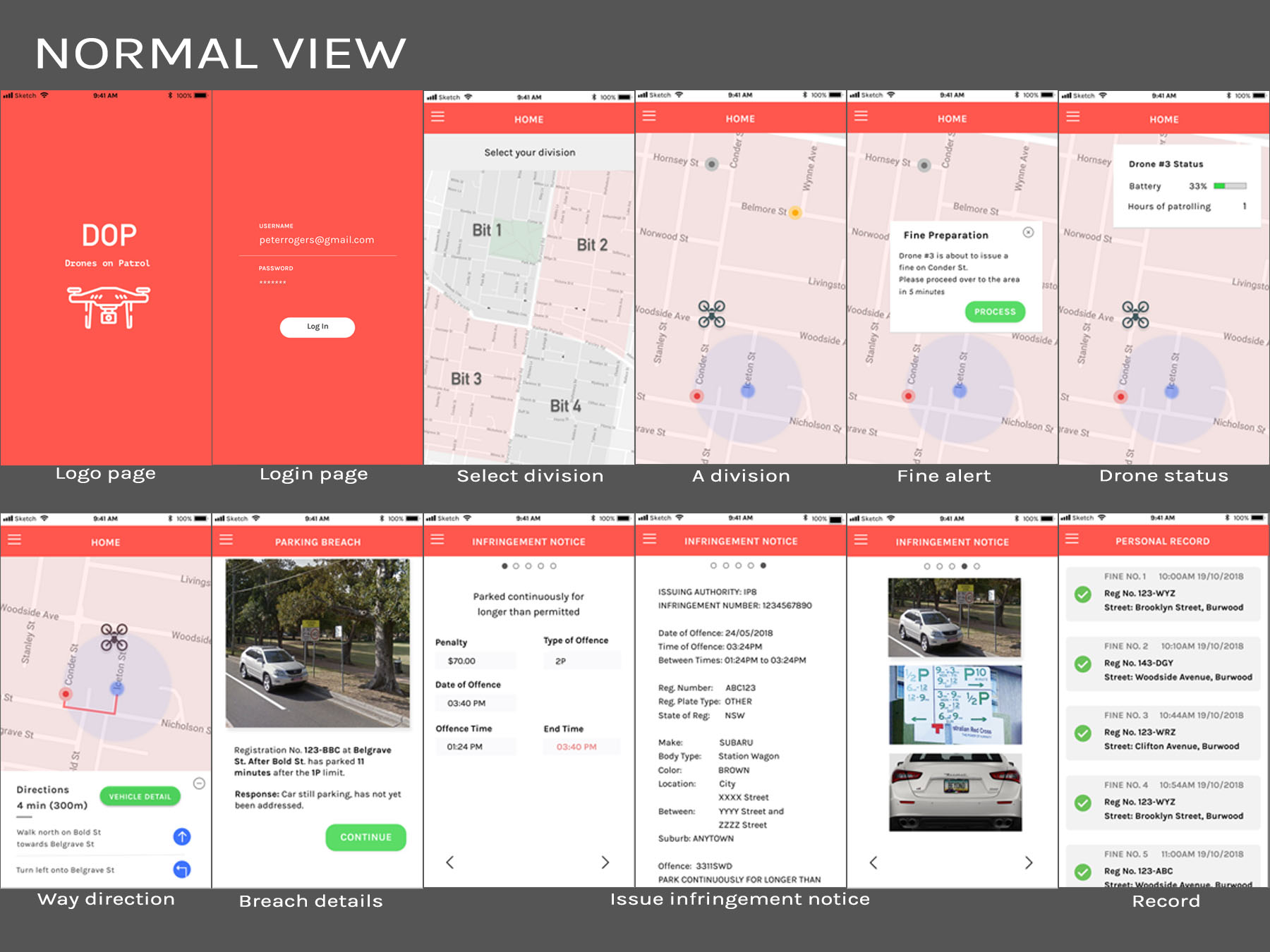
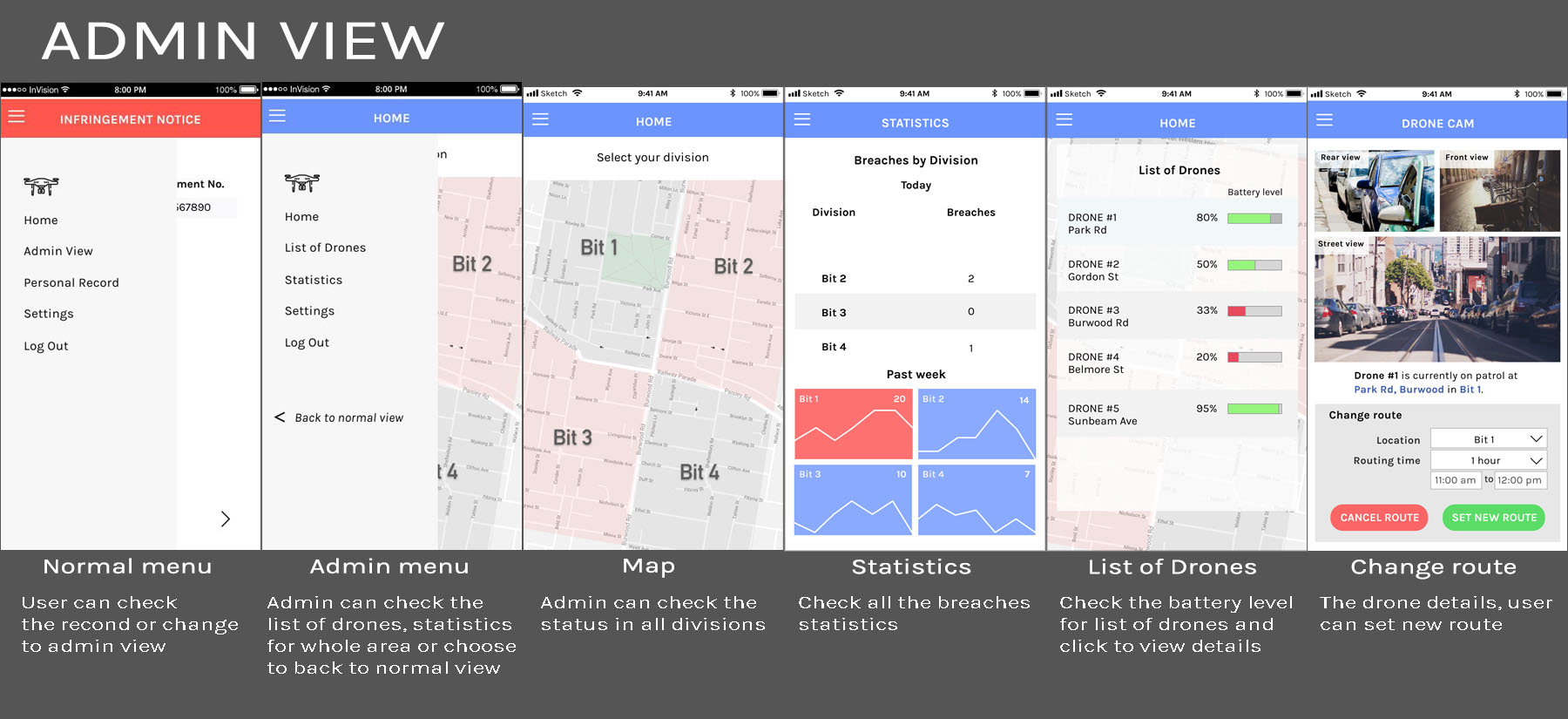
Reflection
Upon reflection of this project, I think we could have done better if we did not spend so much time seeking participants by a wrong method. In addition, I think we spent so much time concentrating on the aesthetics in mockups at the wireframe stage. Looking for participants was not easy because people were not forthcoming to help us and we didn't know what their working hours were. If we had sent emails earlier to city councils this would have helped and saved us more time than finding a volunteer on the street. From this task, I realized the huge importance background research had in this task, particularly by ensuring that we were well prepared for evaluations. I think it lead us to gain more useful information and to design the most appropriate product that fit our target user.
Further skills which were relevant and practical were used from the software Framer. Always training the prototyping skills were critical to help to produce a fantastic result.
Overall, we are satisfied with our final outcome. We were able to successfully invite many volunteer participants which initially was one of the biggest struggles of this project. As a team, we all collaborated very well and achieved our goal successfully. It was clear that during the testing, our users were satisfied with our design and felt the autonomous vehicle and design concept we introduced is a trend of the future.
Further skills which were relevant and practical were used from the software Framer. Always training the prototyping skills were critical to help to produce a fantastic result.
Overall, we are satisfied with our final outcome. We were able to successfully invite many volunteer participants which initially was one of the biggest struggles of this project. As a team, we all collaborated very well and achieved our goal successfully. It was clear that during the testing, our users were satisfied with our design and felt the autonomous vehicle and design concept we introduced is a trend of the future.

